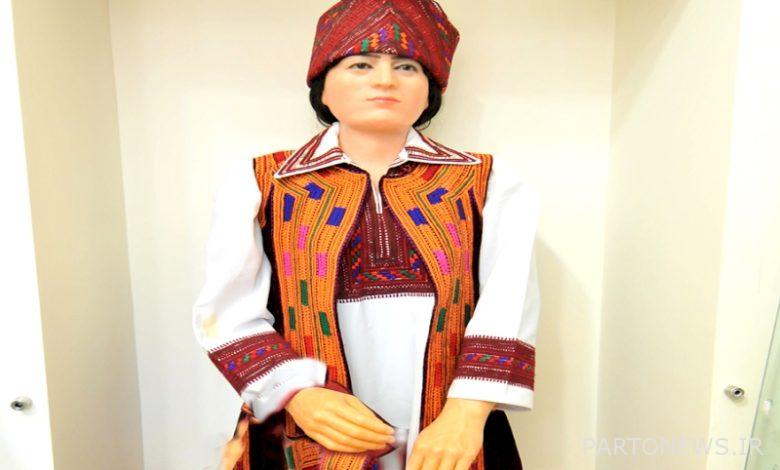Cossack traditional clothing reflects the ancient traditions and history of this people

Clothing is the most important and distinctive manifestation and the most rapidly transmitting cultural symbol that today is rapidly influenced by the phenomena of culturalization among various human societies. Clothing in many parts of Iran has undergone many changes among different ethnic groups due to climatic characteristics, civilization and culture, beliefs and customs. In particular, the traditional clothing of different ethnic groups, which, if not considered as a rich and valuable culture, will be completely replaced by new industrial products with its unlimited popularity.
The migration of Cossacks from their homeland to Iran began in the years 1307 to 1315. Today, in Golestan province, they mostly live in the three cities of Gorgan, Gonbad Kavous and Bandar-e-Turkmen, and in all three cities their main place of residence is called “Qazaq-e-Mahalla”.
The treasure trove of traditional Kazakh clothes reflects the culture and art of this people and is related to their customs and living conditions. Their national costume reflects the ancient traditions of the Kazakh people and history. It is adapted to nomadic living conditions, harsh and changing climates, winter storms and severe Central Asian heat.
Kazakh traditional clothing is not just a field of handicrafts, but also includes several indigenous fields, including needlework, patchwork, jewelry making, root weaving, tassel weaving, coin embroidery, traditional textiles, spinning, dyeing, and so on. کرد. In fact, by preserving one discipline, several disciplines of handicrafts can be practically supported and kept at risk of oblivion.
Cossacks living in Iran still retain their traditional clothing and generally wear white women’s clothing with accessories such as jewelry, Cossack embroidery, patchwork, beadwork and tapestry. Their clothes consist of a long shirt (quilt), a long vest (besht), a long coat (ashik), a hat (jaulaq or borama), pants (dambal), boots (tik) and.. In the past, women wore their traditional dress at weddings and celebrations, but in everyday life they wore plain shirts without embellishments. Kazakh girls also wore hats (javelq) with their clothes, dome, and women, but today girls wear colored scarves and women wear only white scarves after marriage.
Cossack women’s shirts are called “quilks”, which are often white. When embroidery, sequins, beads and tapestries are embroidered on the shirt, it is called “kabistic” and is specific to the bride.
In everyday life, Kazakh women wear long, unadorned shirts. They also wear a suede or velvet vest called a “vest” on the shirt. The long vest is called “Ozone Bashbat” and the short vest is called “Qasqa Bashbat”.
On the head or shoulder of the Cossack bride, a long cat decorated with a braid is hung with colorful beads with roots and beads called “Ashk”. Before marriage, girls wear hats called “takhia” and “qube”. When they want to get married, they take off their hats and caps and put on a headband called “Zhaluq”. The broom is plain white and is embroidered with geometric patterns called “table” (ram’s horn) which appears as a crown on the bride’s head. In addition, another Dastar-like hat called “Borama” is tied around the bride’s head with a long white cloth. Among the Kazakh people, the white color of women’s headbands is the symbol of marriage.
To go to the husband’s house, the bride wears “tears” or “jadaqai” and wears a silk belt around her waist. Opens the belt.
Women’s trousers are made of hemp and are often white, and various shoes such as “copper” are made of soft leather, with many embellishments and cheerful colors.
One of the elements associated with the Cossack local dress is the ruduzia of the people of this tribe. The stitches that are made on the clothes of the Cossacks, such as embroidery, embroidery, beadwork, coin embroidery, glabton embroidery, etc., are among the decorative elements that also have concepts.
“Skills of preparation and function of Kazakh wedding dress” was included in the list of national intangible cultural heritage in September 1400 and was registered.
.

